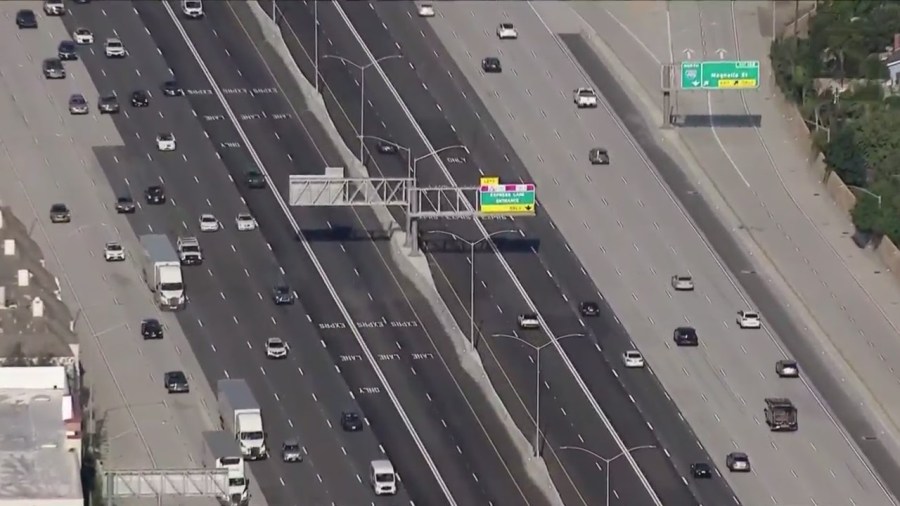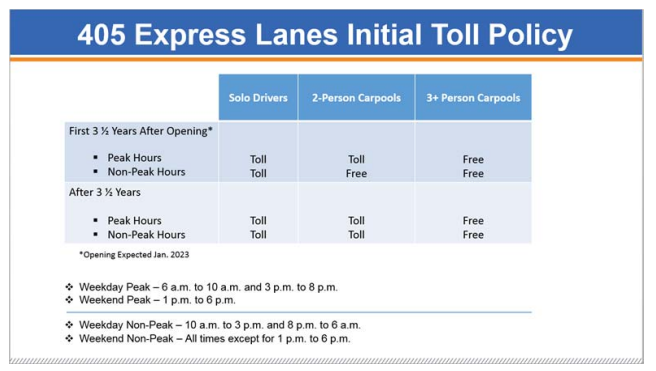It’s finally here, Orange County.
On Friday, new express lanes on the 405 Freeway opened, providing what officials say is a faster option for those willing to pay and less congestion for those who aren’t.
“Everyone is going to benefit from this program,” Darrell Johnson, CEO of the Orange County Transportation Authority, told KTLA’s Ginger Chan. “We’re very proud of the work that we’ve done with our partners at Caltrans and all of the cities along the corridor.”
The lanes, which span 16 miles from the 605 Freeway at the Los Angeles County line to State Road 73 in Costa Mesa, use electronic tolling, requiring drivers to have a FasTrak transponder.
The actual cost to drivers will fluctuate based on the time of day, the day of the week and the direction of travel – something officials call “congestion management pricing.”

“Tolls are increased when traffic volumes consistently reach a trigger point where traffic flow can become unstable. If traffic drops below the optimal traffic volume, tolls are lowered to encourage usage,” OCTA explains on its fact sheet.
According to the Orange County Register, that pricing tops out at $9.95 for a Friday afternoon commute headed north, but “OCTA officials said drivers on average will pay $3 to travel the entire 16 miles on the express lanes.”
The lanes can be accessed for free by some carpoolers, but a transponder is always required.

While the lanes are now open, the work is not yet done.
“Crews will be working through the spring to finish installing lighting for the bridges and landscaping next to the freeway,” the Register reported. “Construction has already finished on the 18 bridges spanning the freeway, as well as ramps and walls.”
The $2 billion project was approved by voters in 2006.





















